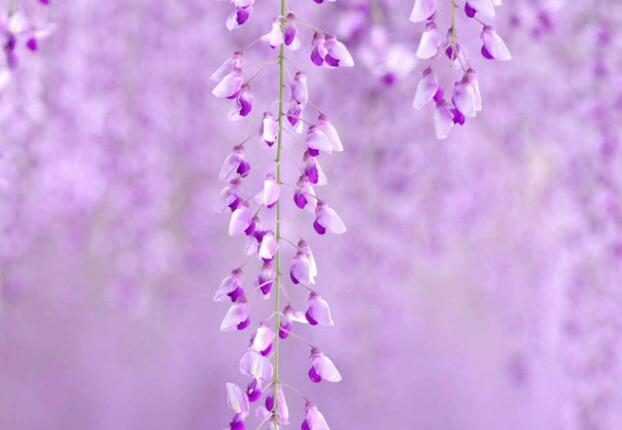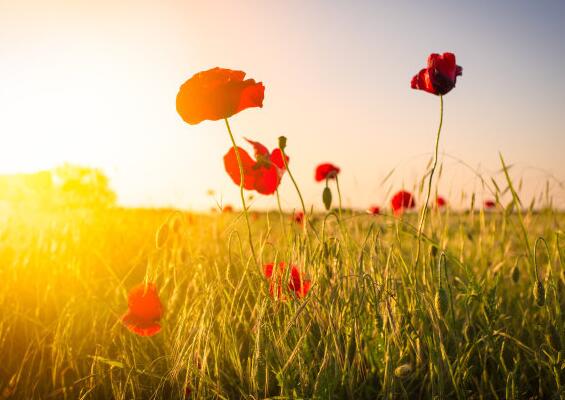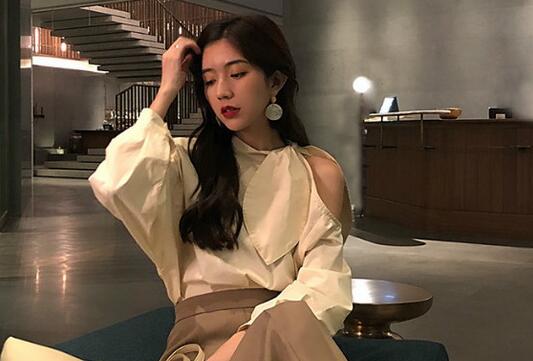
英语导游词(扬州瘦西湖)
瘦西湖的英语表达是:Slender West Lake Slender West Lake is situated in the northwest suburb of YangzhouCity. It originally was a nature river course named Baozhang River.With continuous harnessing through the dynasties, it gradually became ascenic area with many enchanting lake scenes. It is located to the westof the city and is slim in its shape, so people named it Slender WestLake. 瘦西湖位于扬州城的西北郊区,原先是一个名叫宝张河的自然湖泊,经过各朝各代的不断的治理,形成了一个拥有许多美丽湖泊风光的自然景区。
由于它位于扬州城的西郊并且形态瘦长,故取名“瘦西湖”。
Dating from the Tang Dynasty (618-907AD), this manmade lake has often been quoted by several poets of the period. 从唐代开始,瘦西湖就经常被诗人们吟诵了。
Slender West Lake is 4.3 kilometers in total length with an area ofover 30 hectares. The lake boasts many famous scenic spots, such as theWhite Pagoda, the Five Pavilion Bridge, and Xiaojin Hill.The Long Dike is on the western bank of the lake, extending about one hundred meters from the entrance of the park to the Xiaojin Hill.Weeping willow trees are growing all along the dike. In the lake is anislet where Zheng Banqiao's calligraphy of couplets can be seen in a house. 瘦西湖总长4.3公里,面积30公顷。
瘦西湖因诸如白塔、五亭桥和小金山之类的景点而闻名于世。
瘦西湖的西岸有著名的长堤,从公园的入口开始绵延一百多米直到小金山,长堤边种满了垂杨柳。
湖中有个小岛,的一些书法作品就收藏在此间的一栋房子中。
广东省博物馆导游词(中英)
广东省博物馆于1957年开始筹建,1959年10月1日,广东省博物馆及其所辖的广州鲁迅纪念馆正式对外开放。
旧馆馆址在广州市文明路215号中山大学旧址(即原广东贡院旧址),占地面积4.3万㎡,除广州鲁迅纪念馆外,还辖有全国重点文物保护单位——国民党“一大”旧址(包括革命广场)和广东省文物保护单位——红楼等。
筹建之初,广东省博物馆陈列大楼设计原是“U”形的建筑物,主楼向东,右为南副楼,左为北副楼,规划建筑总面积1.4万㎡。
南副楼于1959年上半年落成,楼高三层,面积3500平方米。
主楼和北副楼后因经济困难,没有拨款建设。
改革开放后,为适应人民群众日益增长的文化需求,广东省博物馆在原址上建设了新的陈列大楼。
1992年10月新陈列大楼落成,总建筑面积18700㎡,其中新建陈列大楼12300㎡,陈列面积达6000㎡,为原楼1500㎡的4倍。
自成立以来,在党和政府的亲切关怀下,广东省博物馆通过考古发掘、调拨、购买、接受捐赠等方式征集了大量珍贵文物,并在此基础上深入开展学术研究,举办各种形式和题材的陈列展览,努力向社会提供丰富、优质的公共文化服务,在藏品收藏保管与科技保护、陈列展示、科学研究和教育推广等方面,都取得了长足的发展和丰硕的成果,并于2008年5月获评为全国首批“国家一级博物馆”。
截止2009年12月,通过考古发掘、收购、调拨、接收捐赠等方式,广东省博物馆藏品已达16.6万余(套),其中,一级文物404件,二级文物7284件,三级文物12639件,自然标本、化石4万余件(套)。
馆藏中的古字画、古陶瓷两类传世文物,无论数量还是质量,在全国博物馆中,均名列前茅,尤以“岭南画派”书画藏品丰富而闻名;端砚和潮州木雕独成系列,是极具特色的广东传统工艺收藏品;广东出土文物、广彩瓷器、石湾陶塑、广州牙雕、外销画等极富地方特色;自然标本中的“须鲸骨骼”、“巨型孔雀石”和五吨多重的“信宜玉石”等亦极其珍贵。
此外,广东省博物馆还收藏有图书资料10余万册。
十年来,广东省博物馆推出了许多产生过重大社会影响的大型展览,如《广东历史文物展览》、《广东出土文物展览》、《广东省改革开放成就展览》、《商承祚先生捐赠文物精品展览》、《刘少奇光辉业绩展览》等。
目前,馆内的基本陈列有:《广东历史大观》、《漆木精华 ——潮州木雕艺术展览》、《南海海上丝绸之路》、《广东珍稀动物展览》、《鲁迅生平与纪念》、《国民党“一大”与第一次国共合作史料陈列》等。
这些根据广东历史文化特点和馆藏优势推出的展览,反映了岭南文化悠久的历史文化积淀和丰富的自然资源。
此外,每年还不定期地推出一些各具特色的临时展览。
从开馆到现在,累计举办陈列展览300多个,从1985年至2004年近二十年间,平均每年举办8-9个陈列展览。
接待观众数百万人次。
广东省博物馆于1957年开始筹备,馆址定在文明路6号(今215号)中山大学旧址(即旧贡院)。
陈列大楼设计原是“U”形的建筑物,主楼向东,右为南副楼,左为北副楼,建筑面积约14,000平方米。
南副楼于1959年上半年落成,楼高三层,面积3500平方米。
主楼和北副楼后因经济困难,没有拨款完成。
1959年10月1日,广东省博物馆及其管理的广州鲁迅纪念馆对外开放。
改革开放以后,为适应人民群众日益增长的文化需求,广东省博物馆决定在原址上建设新的陈列大楼。
1992年10月新陈列大楼落成,总建筑面积18700平方米,其中新建大楼12300平方米,陈列面积达6000平方米,为原楼1500多平方米的4倍。
Guangdong Provincial Museum began construction in 1957, October 1, 1959, Guangdong Province Museum and under the jurisdiction of the Guangzhou Lu Xun Memorial Hall opens. The old museum is located in Guangzhou city of civilization Road No. 215 Zhongshan University ( former Guangdong site the site), covers an area of 43000 square meters, in addition to the Guangzhou Lu Xun memorial hall, also have jurisdiction over the national key cultural relics protection units -- the a site ( including the revolution Square ) and Guangdong Province paper relics protection unit -- red etc..At the beginning of the establishment, Guangdong Province museum building design is U shaped buildings, the main building to the East, south side, right, left for the north side building, planning a total construction area of 14000 square meters. The south side building in the first half of 1959 was completed, a three-storey building, area 3500 square meters. The main building and the north side building, due to economic difficulties, no funding construction.After the reform and opening up, in order to meet the growing cultural needs of the people, Guangdong Province Museum on the site of the construction of the new building displays. In 1992 October the new exhibition building was inaugurated, a total construction area of 18700 square meters, of which 12300 square meters of new building displays, display area of 6000 square meters, for the original building 1500㎡4 times.Since its inception, the party and the government under the loving care of Guangdong Province, the museum through archaeological excavation, transfer, purchase, donations and collected a large number of precious cultural relics, and on the basis of in-depth research, holding various forms and themes of the exhibition, and strive to provide rich, high-quality public cultural service in the collection, storage, display and technological protection, scientific research and education etc, have made great strides in the development and fruitful results, and in 2008 May was named the first batch of national museum .As of 2009 December, through archaeological excavation, acquisition, transfer, donations and other means, Guangdong Province Museum has reached more than 16.6 ( sets), in which, a class of 404 cultural relics of 7284 cultural relics, level two, level three of 12639 cultural relics, natural specimens, fossils of more than 4 pieces ( sets). The collection of ancient calligraphy, ancient ceramics two handed artifacts, both quantity and quality, in the National Museum, have come out in front, especially in the south of the Five Ridges school of painting and calligraphy collection rich and famous; Duan and Chaozhou wood into a single series, is very characteristics of Guangdong traditional crafts collections; Guangdong unearthed cultural relics, the color of porcelain, Shiwan Guangzhou ivory carving, pottery, exporting paintings highly local characteristics; natural specimens in whale bones , giant Malachite and five tons of multiple Xinyi jade is also the extremely precious. In addition, Guangdong Province, the museum also has a collection of books of more than 10 books.In ten years, Guangdong Province Museum launched many had great social impact of large-scale exhibition, such as the Guangdong historical relics exhibition , Guangdong unearthed cultural relics exhibition , Guangdong Province reform and opening achievement exhibition , Mr. Shang Chengzuo , donated cultural relics exhibition Liu Shaoji glorious achievements exhibition etc.. At present, the basic display: history , Guangdong grand paint wooden essence -- Chaozhou wood carving art exhibition , the South Silk Road on the sea , rare animal Guangdong exhibition, Lu Xun's life and honor , the a and the first cooperation between the KMT and the historical exhibition etc.. According to the historical and cultural characteristics of the Guangdong and its collection launched the exhibition, reflect the culture of South of the Five Ridges has a long history of cultural heritage and rich natural resources. In addition, also do not regularly introduced some distinctive temporary exhibitions. From the opening to the present, accumulative total hold exhibitions more than 300, from 1985 to 2004, nearly twenty years, the average annual 8-9 exhibition. Millions of people to receive the audience.Guangdong Provincial Museum in 1957 to begin preparations, is set in the civilized road No. 6 (now 215 ) Zhongshan University site (i.e. old Gongyuan ). Display building design is U shaped buildings, the main building to the East, south side, right, left for the north side buildings, construction area of about 14000 square meters. The south side building in the first half of 1959 was completed, a three-storey building, area 3500 square meters. The main building and the north side building, due to economic difficulties, no funding to complete. In October 1, 1959, Guangdong Provincial Museum and the management of the Lu Xun Memorial Hall in Guangzhou to open to the outside world. After the reform and opening up, in order to meet the growing cultural needs of the people, Guangdong Province museum decided on the site of the construction of new building displays. In 1992 October the new exhibition building was inaugurated, a total construction area of 18700 square meters, of which the new building of 12300 square meters, display area of 6000 square meters, for the original building more than 1500 square meters of 4 times.
谁能给我苏州导游资格考试的七个景点的导游词,最好有英文的,嘿嘿
我是外面导游证本来要转的 但是怕麻烦后来别人说 只要在当地考外导的话就直接能转过来的就想问问 ..
介绍青岛的导游词
青岛,最具有代表形容就是“红瓦绿树,碧海蓝天”。
黄海之滨是非常有名的避暑胜地。
另外,青岛所特有的欧洲风情同样令人神往。
漫步在金色的沙滩上、蔚蓝的大海边和苍翠的松树下,实在令人神清气爽。
青岛自古以来就是文人贤士所留恋的地方,留下了许多名人的痕迹。
青岛的崂山被誉为“海上名山第一”,山海相依的景象曾让无数游客为之惊叹。
并且同样充满了浓郁的文化气息和神秘的传奇色彩。
求日语湖北导游词或日语导游培训机构
可去武汉外国语学院联络一下。
那里有很多日语或英语学生在读时都充当兼职导游。
如果要进行语言强化的话,那里也可是一个比较不错的语言加油站。
另外也可致电武汉旅游局咨询。
一般考前都会有为期二月的国导证强化学习班。
什么是“双关”的修辞手法
其一:黛玉宝钗。
画两株枯木上悬着一条玉带。
地下又有一堆雪中一股金簪。
也有四句道: 停机德,堪怜咏絮才。
玉带林中挂,金簪雪里埋。
两株枯木是林字,悬着玉带,分明是林黛玉。
林黛玉有咏絮之才。
咏絮才,用的是晋代谢道韫典故。
谢安雪天吟诗:白雪纷纷何所似
其侄谢郎说:撒盐空中差可拟。
其侄女谢道韫说:未若柳絮因风起。
黛玉有此文才又能如何
这般才女结果怎样
玉带林中挂而已。
也是走向自己的反面。
很多读者都希望黛玉和宝玉结婚,这样写也是一部书,可作者本义却非如此,作者本义就是让我们难受,在这难受中去体会人事无常。
一个挂字妙极,令你无限联想。
与那宝玉知心一回,宝玉却与宝钗结婚,挂也不挂
千诗万文,一死皆成梦幻,挂也不挂
千万莫怨作者,何不示黛玉以死。
宝玉黛玉这般情爱,一个挂字了结,比那死字残忍得多。
死不足惧,挂最悲哀。
一堆雪,雪中一股金钗,分明便是薛宝钗。
宝钗有停机之德。
停机德,是汉代乐羊子的妻子,在乐羊子中断学业回家时,她停机断布,以厉丈夫继续求学。
宝钗有这样的德行,结果如何
金钗雪里埋而已。
这样贤慧之女,雪里埋已够残酷,千万莫说有埋应死的话。
土里埋,断死还可;雪里埋,断死便是证据不足。
可这雪里埋,即便不死,象宝钗这样德才兼备的大家闺秀,一心想出人头地者,真还不如死了好受。
作者真是挖空了心思,一字一句都不肯放过读者。
从诸家批文可断言,宝玉和宝钗成婚了。
宝玉最后出家,正所谓悬崖撒手。
其二:元春。
画着一张弓,弓上挂着香橼。
也有一首歌词云: 二十年来辨是非,榴花开处照宫闱。
三春争及初春景,虎兔相逢大梦归。
香橼上弓,暗含着元春进宫。
二十年来辨是非,是说元春明理。
榴花开处照宫闱,榴花开指女子出嫁,是说元春一嫁嫁到宫中,光耀家门。
三春争及初春景,是说假家自元春入宫,家道由三春又回到初春的景致。
结果如何呢
还是走向反面:虎兔相逢大梦归。
第九十五回,元妃死。
在虎兔相交之年死去,即立春在虎年,死在立春后一日,从命理上来说,便是兔年开始。
名义上死在虎年,实则死在兔年,便是所谓的虎兔相逢。
而这点点知识,可不是谁都知道的,只有对阴阳八卦天干地支都通晓的作者本身,才会有此笔墨,只有懂得算卦打命的先生,才会用这样言辞。
程高本,甲戌本,庚辰本,都写成“虎兔相逢”,这是原本墨迹;后人不解命理意义,改作虎兕相逢,以为虎兔不成比例,只有用兕才可与虎相对,并理解成围猎、宫庭之斗,这又是不知作者心了。
还是那句话,读不懂可再读,迷底早晚都可解开;非改迷面,那就成了你出的迷、你写的书了,这如何使得
批书人言及的射圃书稿已不能再见到,后来读者去猜的话,便傻了,想想看,读过石头原稿的脂砚斋、雪芹未能补出,后人谁还敢补
这个漏洞便从此留下了。
程高手头资料那样多,也未敢动手来补这些漏洞,任其漏着,如狱神庙之类,无一处补齐。
所以读红书,多动脑,莫动手。
其三:探春。
画着两个人放风筝。
一片大海,一只大船,船中有一女子,掩面泣涕之状。
画后也有四句: 才自清明志自高,生于末世运偏消。
清明涕泣江边望,千里东风一梦遥。
两个人放风筝,两人,是指贾政和王夫人,风筝暗示探春。
大海大船,是说贾政王夫人做主,把探春远嫁到海一带的富贵人家。
才自清明志自高,探春有才有志,连凤姐也不敢小瞧探春。
这样的才志又能如何
生于贾家末世,远嫁到海,只能清明涕泣江边望,千里东风一梦遥了。
才何能显
志焉能遂
这便是佛家所说的人世无常,便是佛家说的求不得苦,便是爱别离苦。
人生八苦缠身,须慢慢读红楼,慢慢体会。
其四:湘云。
画着几缕飞云,一湾逝水。
其词云: 富贵又何为
襁褓之间父母违。
展眼吊斜辉,湘江水逝楚云飞。
云与逝字,可定是史湘云。
富贵又何为
襁褓之间父母违。
是说香云生在富贵之家,但也有一缺,自幼父母双亡。
展眼吊斜辉,湘江水逝楚云飞。
是说湘云开朗,活泼,找个好丈夫,可得到的只是一点斜辉而已。
婚后,丈夫得了痨病,活不得几年了。
还是无常。
这一无常,谁也逃不过。
从脂批来看,史湘云嫁的丈夫可能是卫若兰,但石头写的射圃原稿已丢失,雪芹未能补齐,程高又不敢补,只好留下这个漏洞。
为了前后照应,不出矛盾,程高才在后四十回,连补了一下香云结局。
从连补来看,还算成功,因为果然有一天射圃稿找到的话,和程高连补处放在一起看,不会有大矛盾的。
有人说史湘云该嫁宝玉,并白头到老。
根据是第三十一回题目:因骐麟伏白首双星。
这是不可能的,作者无此意图,从判词和曲演中都看不出此意图,从主题也不可能推出这样的结果。
这样说的读者是不懂什么是双星。
细看看判词,也不会得出湘云能和谁白首的结论。
实际上,曹雪芹在整理时,以此为题目,有如下两个原因。
一方面是本回后半部写的内容便是骐麟,便是阴阳之理;另一方面,因骐麟伏白首双星,是说,这大小一雄一雌骐麟,正因为是无息无情之死物,才藏阴阳不可分即阴阳白首之至理。
相比之下,有情的男女,想如阴阳双星那样白首,就难之又难了。
有诗说: 笑问如何出红楼 情空才可大自由 麒麟本是无情物 阴阳才可到白头 骐麟:有二,一大一小,小金骐麟是指湘云所配戴的骐麟,那大金骐麟主人不知是谁,只是宝玉在礼品中拣出,想送给湘云,反被香云拣到。
丫环翠缕一见大骐麟,便说“可分出阴阳来了”。
双星:是指一阴一阳,阴为月,阳为日,便是双星; 白首双星:白首者,一阴一阳,谓之白首双星。
阴阳本是一体,阴不离阳,阳不离阴,永不分离,谓之双星白首。
因一对骐麟,才伏藏这白首双星,实际上是告诉我们如何才能白首
答案是:学那无情的石头骐麟,便可白首,便可仙寿恒昌,便可芳龄永继。
而痴情的人,整日陷入二边之见,或阴或阳,执著一边,不得永恒之真,如何能白首
注意,这白首和仙寿恒昌是一个含义,都是佛道家语,不可错解。
这还是劝人放下情字。
果然无情了,人便成了那无心骐麟,便能象那一阴一阳一般,真的永不分离了,真的是一不是二了,真的仙寿恒昌,便得圆觉了。
所谓白首,从最深角度看,那是指归得真心自性。
归得真心自性,那才是真正的白首,真正的永恒,真正的仙寿恒昌、芳龄永济。
这是作者靠自家脚踏实地的修行得来结论,非普通读者可理解。
能解者,就知道作者有多伟大,有多慈悲,就自然流泪了。
其五:妙玉。
画着一块美玉,落在泥污之中。
其断语云: 欲洁何曾洁,云空未必空。
可怜金玉质,终陷淖泥中。
妙玉欲洁,结果不洁;妙玉云空,可结果未空。
被贼劫到海中,终陷淖泥。
人世间,不如意事七八九,求不得的。
有人说程高本后四十回不该暗示妙玉自杀,这是不知作者心者,是读者不如程高处。
在作者心中,正册之十二金钗何等圣洁,岂能令其落在淫字上
女儿家,落一个情字,作者还力主清之,何况淫了
暗示妙玉自杀,正是石头作者首尾相贯处,这正是程高高明之处。
请看批语: 三十八回。
妙玉忙命:将那成窑的茶杯别收了,搁在外头去罢。
【靖眉批:妙玉偏辟处,此所谓过洁世同嫌也。
他日瓜州渡口劝惩不
哀哉。
屈从,红颜固能不枯骨各示】 可见,在瓜州渡口,盗贼对妙玉,一定是劝了也惩了,但妙玉还是不改偏辟处,不给他们面子,不屈从盗贼,偏以枯骨各示贼人。
靖批才长叹一声:哀哉。
屈从的话,凭妙玉红颜,就不能枯骨各示贼人了,就不会死了。
这无异于赞叹妙玉“有骨气”。
有人断句成“哀哉屈从,红颜固能不枯骨各示”,解释成“妙玉屈从了盗贼,红颜当然能不枯骨各示贼”。
这样解释,单句看来也通达,可和前句连起,便不通达了。
前句是说“妙玉有被世人嫌弃的偏僻、过洁,这偏僻过洁又不改。
他日瓜洲渡口盗贼劝她了吧
惩她了吧
改了吗
正因为不改,才死了,靖批才“哀哉。
屈从,红颜固能不枯骨各示”。
显见是说,妙玉偏僻过洁,死也不改。
靖批是在赞叹妙玉的偏僻和过洁。
其六:迎春。
画一恶狼,追扑一美女,有欲啖之意。
其下书云: 子系中山狼,得志便猖狂。
金闺花柳质,一载梦黄梁。
迎春是贾家二小姐,当然是金闺花柳了。
可结果如何
仍是走向反面,不如人意。
恶狼是孙绍祖,迎春之夫。
贾家对他家有恩,他却忘恩负义,虐待迎春。
不足一载,迎春被折磨而死。
其七:惜春。
画一所古庙,里面有一美人,在内看经独坐。
其判云: 堪破三春景不常,缁衣顿改昔年妆。
可怜秀户侯门女,独卧青灯古佛旁。
惜春是贾家四小姐,是秀户侯门之女。
结局如何
看破三个姐姐无常之苦,缁衣出家了。
也是无常。
其八:凤姐。
画一片冰山,山上有一只雌凤,其判云: 凡鸟偏从末世来,都知爱慕此生才。
一从二令三人木,哭向金陵事可哀。
凡鸟猜字为凤。
凤是贵鸟,却落冰山,无常也。
风姐之干才,男人也多不能及,令人爱慕。
一从,是说从上,讨贾母欢心;二令,是说令下行权,掌贾府实权。
凤姐一生,争强好胜,露脸出头,可结果呢
“三人木”而已,即一个“休”字了结。
这个休字,对凤姐来说,可比死还难堪。
作者文笔这般锋利,刀子一般,凤姐这般人物,争了一生,居然还她个“休”字了结,真是妙极。
其九:巧姐。
画一座荒村野店,有一美人在那里纺织。
其判曰: 势败休云贵,家亡莫论亲。
偶因济村妇,巧得遇恩人。
贵,令你势败;亲,令你家亡。
仍是走向反面。
灾难来了,积得阴骛,总有救星,还是走向反面;你凤姐无心之下接济的刘姥姥,却成了巧姐的恩人,巧姐被救到了乡下,躲过一劫。
画中含意,正是说巧姐被救村野之中;纺织,将来嫁到村野中的富贵人家,而成为贤慧主妇。
程高本后四十回,关于巧姐结局的安排,是否原作者笔墨
从脂批来看,不全是。
但雪芹或程高安排巧姐嫁到村野之邦,便已达到以无常来警醒世人的目的。
嫁个富一点的,令巧姐得个稍好结果,是赞凤姐积阴德所赐,是因果报应,不是雪芹或程高偏爱。
这也在告知读者及九泉之下的凤姐:恶故有恶报,可善也有善报的,你行的那点善事,终落在你女儿身上了得了善报。
这都和作者的佛家思想息息相关,岂是曹雪芹或程高胡乱安排
细观红楼梦,除了照顾不到的微细处外,每一个细节,都是经过苦心经营的。
何况这些大的骨架之处,作者及这些修书之人怎能不用尽心机
其十:李纨。
画一盆茂兰,旁有一凤冠霞帔的美人。
也有判云: 桃李春风结子完,到头谁似一盆兰
如冰水好空相妒,枉与他人作笑谈。
桃李春风结子完,到头谁似一盆兰
便说李纨和其子贾兰,最后母以子贵。
李纨守寡,终有个好的结果。
有人以此说作者思想有问题,贾家本应大败涂地,不得翻身,可这贾兰明明便是星星之火,使贾家再有燎原之势,作者岂不有问题
不是作者有问题,是读者有问题,没读明白作者而已;若知道一部红楼梦,作者以无常和因果报应为基调,读者若是明白何为无常,就不会去怪作者了。
如冰水好空相妒,枉与他人作笑谈。
这两句是说,李纨如冰那般清,如水那般柔,这样的好人,又有这样的得了富贵的好儿子,将来会怎样
仍要走向反面的,终归仍是空,谁也逃不过这空的妒恨。
冰水空三字,是佛法常用的一个比喻。
冰不常在,能化成水;水不常在,能化成冰,一切都是无常,无常便是空,便是梦。
里面也有不变者,那就是水性。
人生也是如此,千变万变,不变的是真心自性。
空和无常一到,当然便是枉与他人作笑谈了,便成了游戏笔墨的对象了。
这便是月满则亏的道理。
枯后便是荣,荣后又是枯,循环往复,无有了期。
看罢红楼梦,不知这红楼是梦,依旧计较在那荣字与枯字上,纠缠在情字与爱字上,便是不解其中味了。
十一:秦可卿。
画一座高楼,上有一美人悬梁自尽。
其判云: 情天情海幻情身,情既相逢必主淫。
慢言不肖皆荣出,造衅开端实在宁。
一情字,指秦可卿。
高楼大厦,红楼红红也;美人悬梁自缢,指秦可卿悬梁自缢。
藏一大迷底,那便是跳出红楼,在那“空中”,情才可清。
空是佛家语,也即放下。
从晴文之情字判起,到可卿放下情字,可见红楼主题,是令人看破情字,放下情字。
一部红楼梦,也因此惹来被查禁之祸,因为,作者大骂大清的“情”字,和清字是谐音的。
文字狱还没熄灭的大清国,焉能放过红楼梦
情天情海:一百十一回交待,“看破凡情,超出情海,归入情天”,正是情天情海幻情身。
“警幻宫中,原是个钟情的首座,降临尘世,自当为第一情人”,这第一情人,是指宝玉的第一情人,即在此第五回书,太虚幻境中和宝玉有了情字,可卿此身当然是幻情之身了。
这身字,甲戌手抄本、庚辰手抄本都写作身,但脂批改成深字。
细分析,身字不可改。
判词前两句,幻身、幻淫,本回便都见到了。
一个身字,妙极,幻身,谁能知道此身是幻呢
情既相逢必主淫: 宝玉之欲,逢了可卿之情,岂能不淫
即便幻境,也是意淫,以宝玉地位来说,也是爬灰。
漫言不肖皆荣出,造衅开端实在宁,单看表面,既骂荣府,也骂宁府,骂宁府更重些。
实际上,更有深意。
深意何在
到可卿判词止,读懂的,当然要清那情字了,换句话说要空了。
佛家讲,宁住有如须弥山,不住空如芥子,住空比住有还可恶。
住有败如来家业,住空更败如来家业。
住空者是邪门外道。
宁府之宁字,便是静,便是空,书中骂贾敬胡参,莫轻易看过
游记作文结尾怎么结
结尾:时间过的好快,转眼间,就要离开了,就算再舍不得,也要回去。
再见了“水上幸运桥”“水上滑梯”再见了“高山”“眼镜湖”“勺潭”。
我还会回来看你们的,再见了美丽,迷人的清凉谷……结尾:在漓江上我看见了鱼尾峰、童子拜观音——导游介绍了与他们相关的传说,美丽动人的传说更给桂林蒙上了神秘的面纱。
在路上,闻着清香的桂花香,我想:现在不是开花的季节呀
为什么会闻见花香呢
我顺着香味闻去,呀
原来是四季桂
一颗四季桂只有淡淡的香味,而许多四季桂共同散发出香味,就会感到香味迎面扑在你的鼻子里。
不知不觉,几天的行程结束了。
桂林的山,桂林的水,给我带来无限的遐想。
颐和园导游词怎么说
The Summer Palace Situated in the western outskirts of Haidian District, the Summer Palace is 15 kilometers (9.3 miles) from central Beijing. Having the largest royal park and being well preserved, it was designated, in 1960 by the State Council, as a Key Cultural Relics Protection Site of China. Containing examples of the ancient arts, it also has graceful landscapes and magnificent constructions. The Summer Palace is the archetypal Chinese garden, and is ranked amongst the most noted and classical gardens of the world. In 1998, it was listed as one of the World Heritage Sites by UNESCO.Constructed in the Jin Dynasty (1115-1234), during the succeeding reign of feudal emperors; it was extended continuously. By the time of the Qing Dynasty (1644-1911), it had become a luxurious royal garden providing royal families with rest and entertainment. Originally called 'Qingyi Garden' (Garden of Clear Ripples), it was know as one of the famous 'three hills and five gardens' (Longevity Hill, Jade Spring Mountain, and Fragrant Hill; Garden of Clear Ripples, Garden of Everlasting Spring, Garden of Perfection and Brightness, Garden of Tranquility and Brightness, and Garden of Tranquility and Pleasure). Like most of the gardens of Beijing, it could not elude the rampages of the Anglo-French allied force and was destroyed by fire. In 1888, Empress Dowager Cixi embezzled navy funds to reconstruct it for her own benefit, changing its name to Summer Palace (Yiheyuan). She spent most of her later years there, dealing with state affairs and entertaining. In 1900, it suffered again, being ransacked by the Eight-Power Allied Force. After the success of the 1911 Revolution, it was opened to the public.Composed mainly of Longevity Hill and Kunming Lake, The Summer Palace occupies an area of 294 hectares (726.5 acres), three quarters of which is water. Guided by nature, artists designed the gardens exquisitely so that visitors would see marvelous views and be amazed by perfect examples of refined craftwork using the finest materials.Centered on the Tower of Buddhist Incense (Foxiangge) the Summer Palace consists of over 3,000 structures including pavilions, towers, bridges, and corridors. The Summer Palace can be divided into four parts: the court area, front-hill area, front-lake area, and rear-hill and back-lake area.Front-Hill Area: this area is the most magnificent area in the Summer Palace with the most constructions. Its layout is quite distinctive because of the central axis from the yard of Kunming Lake to the hilltop, on which important buildings are positioned including Gate of Dispelling Clouds, Hall of Dispelling Clouds, Hall of Moral Glory, Tower of Buddhist Incense, the Hall of the Sea of Wisdom, etc.Rear-Hill and Back-Lake Area: although the constructions are fewer here, it has a unique landscape, with dense green trees, and winding paths. Visitors can feel a rare tranquility, and elegance. This area includes scenic spots such as Kunming Lake and Back Lake , which presents a tranquil beauty, Garden of Harmonious Interest , built by imitating the layout of Southern China’s classical gardens, and Suzhou Market Street, endowed with a strong flavor of the water town Suzhou.Court Area: this is where Empress Dowager Cixi and Emperor Guangxu met officials, conducted state affairs and rested. Entering the East Palace Gate, visitors may see the main palace buildings: the Hall of Benevolence and Longevity served as the office of the Emperor, the Hall of Jade Ripples where Guangxu lived, the Hall of Joyful Longevity, Cixi's residence, the Garden of Virtue and Harmony where Cixi was entertained, Yiyun House , where once lived the Empress Longyu, and Long Gallery, which measures the longest in Chinese gardens.Front Lake Area: covering a larger part of the Summer Palace, opens up the vista of the lake. A breeze fluttering, waves gleam and willows kiss the ripples of the vast water. In this comfortable area there are the Eastern Bank and Western Bank, Seventeen-Arch Bridge, Nanhu Island, the largest island in Summer Palace, Bronze Ox, an imposing statue beside the lake, and Marble Boat, built in western style with elaborate decorations . On the western bank float six distinct bridges amongst which the Jade-Belt Bridge is the most beautiful.



